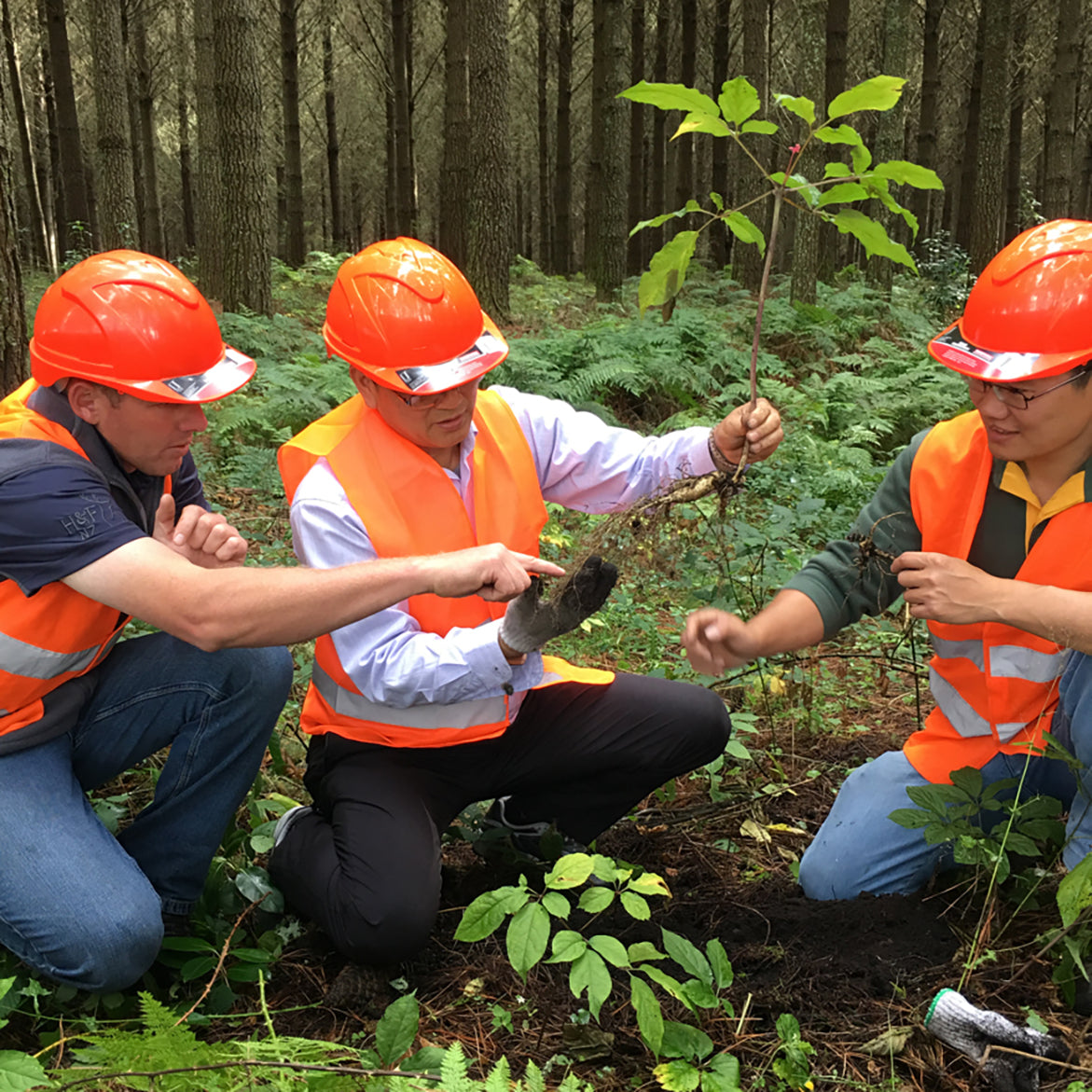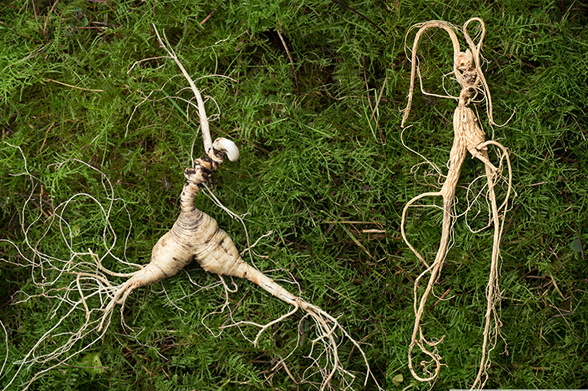The three ways that ginseng grows are wild ginseng found in mountainous forests, farming ginseng at large scale and wild simulated ginseng growing in forests. KiwiSeng is New Zealand’s larger grower of wild simulated ginseng.

Wild Ginseng
Wild Asian ginseng (Panax ginseng) grows naturally in mountains and is hand-picked by gatherers known as simmani. The wild ginseng plant is now extinct in China and endangered globally. This is due to high demand for the product in recent years, leading to the harvesting of wild plants faster than they can grow and reproduce. The ginseng plants grow naturally in heavily shaded areas in mountainside forests in north eastern
The forests on the flanks of Mt Changbai which shares a border with both China and North Korea are te best known areas where wild ginseng can be found. The finding is not easy however, a lot of time is taken to locate and pick wild ginseng – often many hours for a single mature plant which may be 30 to 40 years old.
Farmed Ginseng
Farmed (or cultivated) ginseng is grown on flat land under shade cloth. The ginseng plant is treated as a commodity and often several hectares are grown and harvested together. China, Korea, Russia, the United States and Canada are all home to ginseng growing operations. Like many horticultural crops, the plants are sown, managed and harvested mechanically, often with fertiliser, fungicide and pesticide applications. Ginseng is typically harvested at around four years. The roots tend to be large and ‘fat’ and have little of the appearance of wild ginseng.
Wild Simulated Ginseng
Wild Simulated Ginseng is grown under forests. New Zealand’s planted radiata pine forests provide the perfect forest cover and a single stand of pine trees is ideal since all of the trees are the same age, provide the same shade environment and trees planted in rows make for relatively easy management of the ginseng understory crop. No fertilisers or pesticides are used so the crop can be classed as organic. Other than sowing and harvesting, there is little or no human input.
Wild simulated ginseng roots have the same appearance and chemical properties of wild ginseng – but with easier management and quicker growth to harvest age (typically 8 to 20 years).
New Zealand has 1.72 million hectares of planted forests. Of these 1.5 million hectares is in radiata pine forests. Ginseng prefers a cool dry climate. The Central Plateau of the North Island offers the ideal of combination of cold winters, dry summers and deep friable volcanic soils and high UV index sunlight suitable for ginseng growth. Being situated far away from large population centers, the water quality remains high and there is no detectable pollution. KiwiSeng grows their ginseng at the at the same latitude south (39 degrees south) as wild ginseng grows in the Northern Hemisphere.
Growing wild simulated ginseng is not without its complications. Suite selection is crucial to ensure access for management. The crop is grown in association with a managed pine plantation so forest managers need to ensure that any pine pruning, thinning and harvesting operations take the health and welfare of the ginseng understory crop into account. While pests and diseases of ginseng are minimal in New Zealand, the site needs to be protected from browsing deer and wild pigs. Having an extremely high harvest value (the net returns from a crop of simulated wild ginseng can be many times that of the trees), security from poachers may become an issue.
The table below shows that wild simulated ginseng shares the same product quality benefits that wild ginseng has combined with some of consistency in terms of product quality and quantity that farmed ginseng enjoys.

Future for Wild Simulated Ginseng
The future for wild simulated ginseng in New Zealand looks extremely attractive. With our world-class forest growing infrastructure, New Zealand can become the 5th largest ginseng exporter in the world. Sixteen years of growing (with a lot of trial and error) proves ginseng grows well in NZ commercial forests.
Add to that industry features such as an abundance of existing planted forests, industry R&D support (already with research results from Scion and Massey University), IP protection, a national export focus under the Brand NZ banner, a strong food and fibre investment community and land ownership structures that favour large scale commercialisation.
https://www.mdpi.com/1420-3049/26/4/1158?type=check_update&version=1




Leave a comment
This site is protected by hCaptcha and the hCaptcha Privacy Policy and Terms of Service apply.